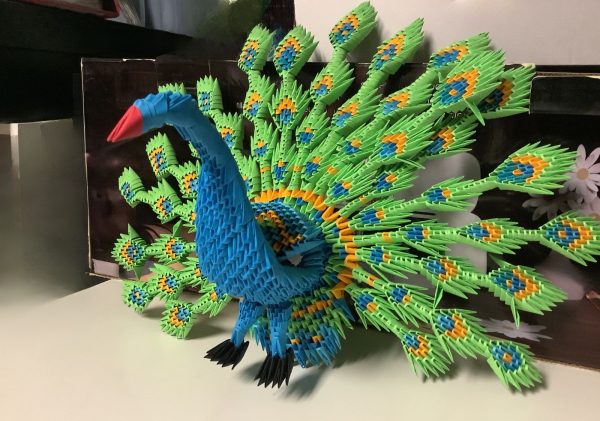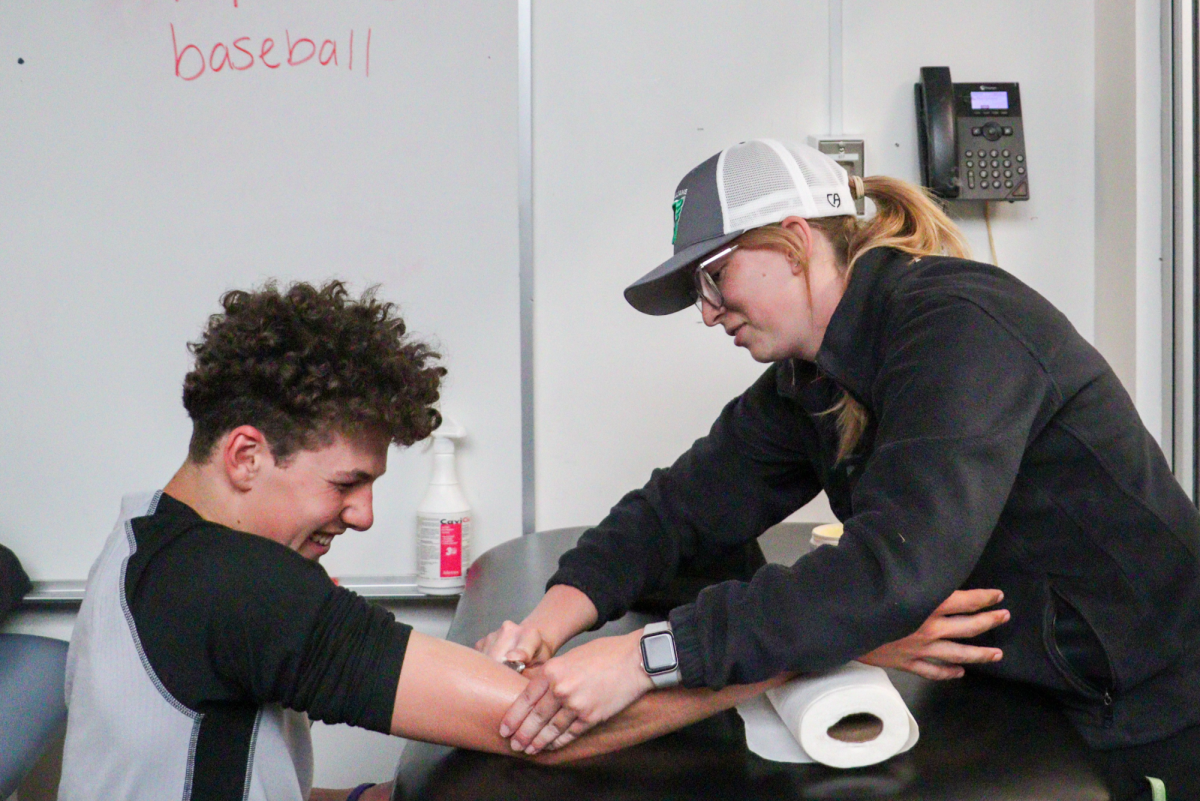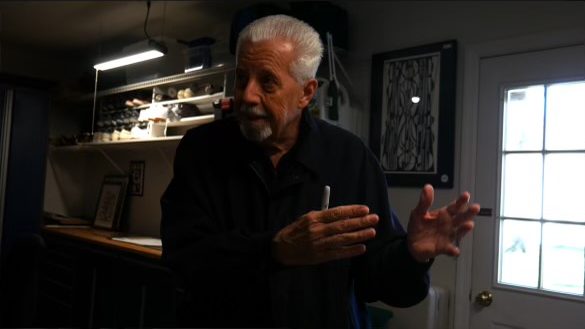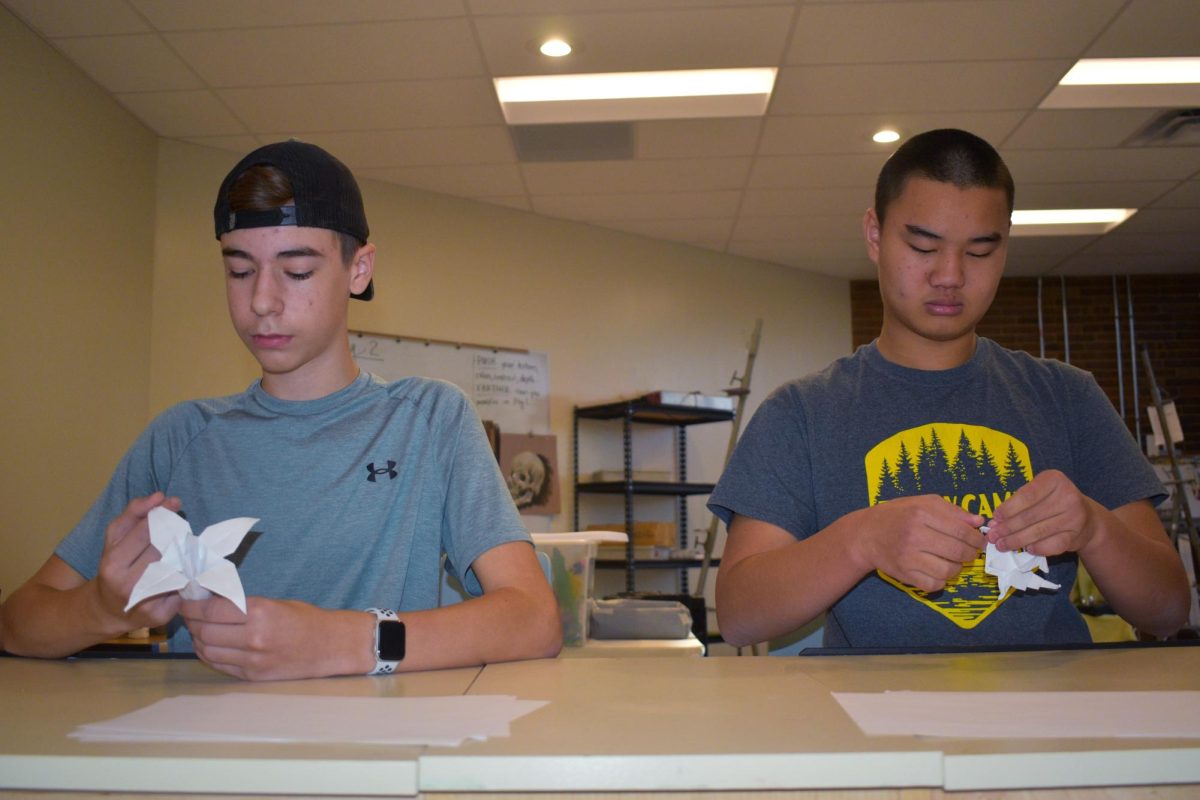
When a time of leisure arises in class, as students go on their phones or talk to friends or read a book, just one piece of paper and a sense of creativity can leave a student to casually experiment with art in the corner of the room. That art is the Japanese art of folding paper to form three-dimensional objects: origami, which has increasingly grown in popularity as a relaxing hobby.
Origami has existed since the 6th century, when it was first used to decorate temples and shrines in East Asia. It was only in the 1950s that the art, introduced by Lillian Oppenheimer, made its way to the western world. Oppenheimer popularized the Japanese term ‘origami’ in anglophone settings, allowing the activity to take modern American culture by storm. Today, renowned museums like the American Museum of Natural History and national organizations like Origami USA help to keep the art alive.
Following this revival of origami over the past decade, freshmen Cole Barton and Preston Priest have worked to expand upon their origami skills in Drawing 1 under the instruction of art teacher Kat Briggs. Briggs discovered Barton and Priest’s proclivity for origami when they fashioned origami flowers during their free time in art class.
“[Their] skills from origami really show off their spatial and visual abilities. When [students] make origami, they are engaging in their own art-making process,” Briggs said.
Barton first began practicing origami after his mom discovered a tutorial on Facebook when he was 8 years old. After following the instructions in the video, Barton’s interest in origami was sparked.
“Even though it was really hard, I enjoyed working on origami and learning from it. I binged videos and tutorials on it on YouTube,” Barton said. “Now, after years of practicing, I have memorized a lot of the techniques. I can fold and create a lot of things without using a tutorial, but some hard origami designs require me to search up videos at times.”
Similarly, Priest was around eight years old when he first discovered origami after visiting the Missouri Botanical Garden for the Japanese Cultural Festival.
“I tried to hone the craft by practicing a lot. I haven’t had a lot of in-school opportunities to practice or create origami, but often at home, I will make more challenging pieces,” Priest said.
Origami is particularly notorious for its steep learning curve with its emphasis on following step-by-step instructions and employing three-dimensional perceptual skills. Despite initial challenges with learning new folds and developing fine motor skills, Barton fervently practiced this skill. Eventually, he advanced enough to open up an origami stand to sell his artwork, raising over $250 in profit and donating $50 to charity.
“Origami is a precise art. It’s not just about folding paper; you have to be willing to try again and again. It tests your stamina and patience,” Barton said. “Origami has helped me understand the importance of

trying my very best. It is so easy to rush through things and not end up doing them properly. One misaligned fold can impact your end creation, so you need to take your time or you risk ruining everything. With origami, the key is in the details.”
Pries has gathered significant accomplishments in origami as well. Just a year ago, Priest won the Glory of Missouri Award for his origami artwork. Now, Priest sells his artwork to friends and family and hopes to eventually pursue origami professionally by setting up a website for origami art sales. He also aspires to write an origami instructional book when he is older.
“I appreciate Preston and Cole’s keen spatial abilities because they can understand and conceptualize in three dimensions, whereas I am much more comfortable in two dimensions with my experience in painting and drawing,” Briggs said. “I am excited to see where each of them take these skills next, whether it be in sculpture, ceramics or drawing classes here at West or beyond.”
This story was originally published on Pathfinder on October 18, 2023.
































![IN THE SPOTLIGHT: Junior Zalie Mann performs “I Love to Cry at Weddings,” an ensemble piece from the fall musical Sweet Charity, to prospective students during the Fine Arts Showcase on Wednesday, Nov. 8. The showcase is a compilation of performances and demonstrations from each fine arts strand offered at McCallum. This show is put on so that prospective students can see if they are interested in joining an academy or major.
Sweet Charity originally ran the weekends of Sept. 28 and Oct. 8, but made a comeback for the Fine Arts Showcase.
“[Being at the front in the spotlight] is my favorite part of the whole dance, so I was super happy to be on stage performing and smiling at the audience,” Mann said.
Mann performed in both the musical theatre performance and dance excerpt “Ethereal,” a contemporary piece choreographed by the new dance director Terrance Carson, in the showcase. With also being a dance ambassador, Mann got to talk about what MAC dance is, her experience and answer any questions the aspiring arts majors and their parents may have.
Caption by Maya Tackett.](https://bestofsno.com/wp-content/uploads/2024/02/53321803427_47cd17fe70_o-1-1200x800.jpg)
![SPREADING THE JOY: Sophomore Chim Becker poses with sophomores Cozbi Sims and Lou Davidson while manning a table at the Hispanic Heritage treat day during lunch of Sept 28. Becker is a part of the students of color alliance, who put together the activity to raise money for their club.
“It [the stand] was really fun because McCallum has a lot of latino kids,” Becker said. “And I think it was nice that I could share the stuff that I usually just have at home with people who have never tried it before.”
Becker recognizes the importance of celebrating Hispanic heritage at Mac.
“I think its important to celebrate,” Becker said. “Because our culture is awesome and super cool, and everybody should be able to learn about other cultures of the world.”
Caption by JoJo Barnard.](https://bestofsno.com/wp-content/uploads/2024/01/53221601352_4127a81c41_o-1200x675.jpg)



